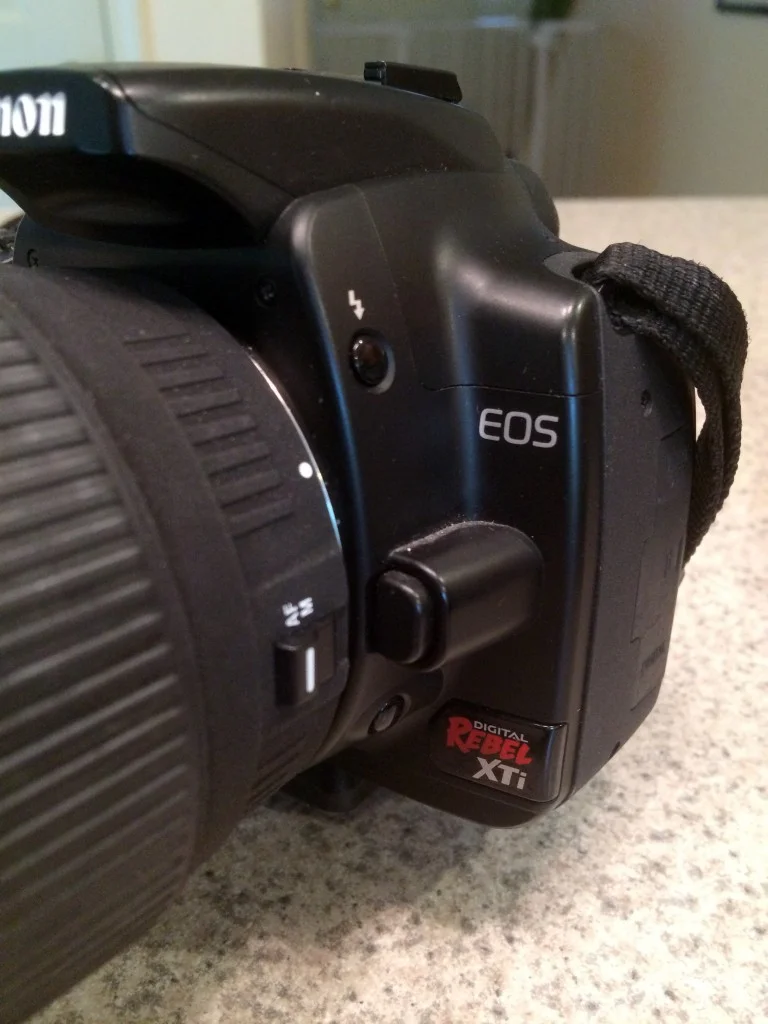Rebelution
It was 22 years ago, I had a department store job, and I'd just scraped up enough change to make my first big purchase. You remember 1992, right? Cuddled up on the couch watching
or if you were a bit nerdier like me:
$220 was a lot for me at the time, but it bought my first real camera: the Canon T50 SLR. I actually still have it:
It was mostly manual, although it did have a single Program mode on the dial that would provide auto aperture/shutter settings. It came with an FD series 50 mm f1.8 manual focus lens. I took a few good pictures with it. One of the better ones was of my friend Carol, who wanted a portrait taken. Here it is:
You can see that I always liked mood and light. Being a film camera, you would take a few dozen photos and hope that you got the alchemy right to get the exposure and lighting effect you wanted. There was no post processing (unless you had access to a dark room and wanted to dodge/burn areas literally by hand). Photography was always like buying a bunch of instant Bingo tickets, peeling open the letters one at a time, and hoping one spelled BINGO. Eight years went by, and it was time for an upgrade. Canon's EOS Rebel line had been launched, and the Rebel 2000 was newly released. It looked quite different than my trusty T50:
The future is here with my 21st century camera! Silver and gray contoured like a starship, and auto functions for everything. Most notably, a built in pop-up flash, autofocus lens, and built in scene modes. Simple 'auto' wasn't enough: you could set your flavor of auto: Portrait, Landscape, Macro, Sports, or Night Shot. Plus, a digital display on the right showing you aperture/shutter/remaining shots:
The Rebel 2000 went on my first international trip, snapping pics across Europe It piggybacked in my back pack up the side of the Gunks while rock climbing, and was there to capture the moment when I got stuck on a ledge with two other climbers.
Another 7 years go by, and the world has shifted to digital. I admit I am still enamored with film photography at this point, and reluctant to make the switch, but the instant availability of digital images is such an overwhelming benefit, especially now that I use photography as part of my color pencil process, that I move to the digital version of my film camera, the Rebel Xti: The Xti is serious with it's monotone black color scheme. It retains all of the Rebel 2000 functions, but adds an LCD screen on the back for settings and viewing images: Unlike point and shoot digital cameras, you cannot take pictures with the LCD screen; you must look through the view finder the same as an old school SLR. This is because for the LCD to see anything, the mirror must flip up to expose the sensor (it is an SLR, after all). Another quirk of the sensor is that it is smaller than a 35 mm piece of film, so in effect you get an amplification telephoto effect from your EF lenses. The digital Rebel has a new line of lenses which compensates for the amplification: the EF-S line (fortunately the base EF lenses still fit). Most of my colored pencil artwork started with poses photographed by the Rebel Xti, and nearly all of my pictures of Emma. The biggest ability I've gained is the ability to instantaneously check and adjust exposure for difficultly lit subjects.
So, that brings us to 2014. It's been 7 years since my last upgrade, and I seem to be on a 7 year cycle, so I make the leap the latest Rebel, the Canon Rebel T5i. Considering my first camera was the T50, the T5i almost brings me full circle in camera titles. The T5i has numerous upgrades: more megapixels, more autofocus points, more scene/program modes, but the standout features are:
- HD Video with an articulated LCD that swings out, so you can use it like a hand held video camera
- iPhone-like touch screen with pinch/zoom/swipe gesture control
- Ability to shoot pictures using the LCD (although this bypasses the viewfinder autofocus system and uses the poorer video AF)
- Digital step motor lens with image stabilization (autofocusing is fast and silent for video recording, and the lens senses its own motion and compensates for it to reduce image blur)
A sample of the T5i's pictures: I'm really amazed by the colors the new camera is able to capture. HD video, which I'd previously been capturing with my iPhone, now has a cinematic quality to it, able to use all of the features (scene modes, depth of field, etc) that are available for stills. I think most colored pencil artists work from photographs, and, by necessity, most learn photography skills. Starting with a photo reference which is poorly or overexposed makes the job of the artist much harder, and starting with an excellent photo helps greatly. Looking at some of the photos from the earlier generation Canons, you can achieve some good results - it's just harder. Colored pencil drawing is hard enough, so making things a little easier on the photography end is welcome! Here's the evolution of the Canon cameras together:








